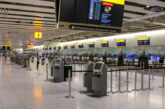
The IET has published a new Code of Practice for Connected Systems Integration in Buildings, which gives a thorough grounding in the principals behind system installation and integration.
There’s a revolution in the role of the modern electrician. Gone are the days when a trusty roll of T&E, a decent pair of side-cutters and a couple of standard-size screwdrivers could see you through the majority of a project. Today’s professional electrician is now increasingly likely to be asked to install and service a wide variety of different devices or, more challengingly, to make a selection of systems from different manufacturers work together in a “connected system”.
The connections to these devices may include low-voltage control wiring or signal cables, in addition to the more familiar mains power terminals; these different cables may have some very specific and unusual physical requirements, both in terms of cross-sectional area (thickness) and topology (network layout). Installation considerations for infrastructure and to avoid interference are now crucially important.
It is with this in mind that the IET has published a new Code of Practice for Connected Systems Integration in Buildings, which gives a thorough grounding in the principals behind system installation and integration, considering both physical and electrical requirements and delving into the fundamentals of both wired and wireless communication. It then looks at specific considerations for various systems, from heating and lighting, from security and sensors, to audio and video.
What is a connected system?
A “Connected System” is one in which a number of devices communicate together in order to facilitate system features that any one product on its own would not be able to achieve. Connected systems offer building-users more convenience, more comfort, a better sense of security, and even access to services when users are not in the building. Networks of devices designed as a system enable greater automation due to convergence of systems together. For example controlling your lighting, shading and temperature together or using one button to do a whole-building-off command that controls both lights and AV together.
Connected Systems present very exciting new project opportunities for professional electricians to explore, and are a natural fit for upskilling; with a wide variety of ready clients and an ever-changing pallet of technologies. The IoT (Internet of Things – also known as M2M or Machine to Machine communication) brings many opportunities that enable technology to increase clients’ standard of living or to enhance the working environment. We also all have an imperative to conserve energy: to make buildings “greener”. It’s easier than you may think to conserve energy with modern reliable occupancy sensors, and integration with HVAC or lighting systems.
Plan ahead
Success in creating a Connected System begins with careful planning: ensuring that the right physical infrastructure, containment, and separation of the electrical devices are provided for. The real world Laws of Physics apply to all systems, and so, for example, that means it’s important to ensure that cables carrying higher voltages don’t induce noise on low-voltage control cables, or in conductors carrying media signals such as audio or video. Induced noise could cause unreliable operation, or disabling of functions, or a lowering of quality in entertainment systems. Simple precautions, such as adequately separating cables and ensuring that they only cross at 90-degrees to each other can help create a reliable installation. It’s often assumed that the common “cat type” cable can be used for all low-voltage communications and control, yet this assumption can have disastrous consequences in many systems.
These days many devices may not be wired at all, using wireless technologies to network. However, a reliance on radio systems can bring new challenges, as the spectrum is a very limited and finite resource. We can’t assume that all devices in a building can happily co-exist. For example, with so many things using the popular 2.4GHz frequencies it’s important to ensure that realistic expectations are established for devices that are attempting to communicate, and it’s crucial for any critical systems to utilise backup techniques. Alternatives to 2.4GHz provide a more reliable option for some control systems communication. Construction materials within a building also have a significant effect on wireless range, e.g. the use of foil-backed-plasterboard or insulation sheets blocking radio signals.
From an end user’s perspective, a connected system must be simple to use. The good news is that there have been great advances in user interfaces in the last few years, and devices such as keypads or touchscreens installed by electricians no longer need to look complex in order to achieve remarkable features! Users can interact with a system by means of wall-mounted controls, sensors of various types, smartphones, and increasingly also by voice-control. Each type of interface, however, must be installed in accordance with the manufacturers’ instructions for cable type and cable topology. With so many systems available there is no single “common standard”.
 New opportunities
New opportunities
So how can professional electricians take advantage of the opportunities offered by this new era of connected systems? Start by having more conversations with your customers about how they use their buildings and to consider how connected systems can bring convenience, energy conservation and can also act as a useful way of complying with legislation such as Part L of the Building Regulations. There are various organisations, such as the IET and CEDIA, who have a lot of educational material in this area, and manufacturers have extensive education programmes to encourage and assist electricians who want to add more value to their jobs with this new technology.
Remember that the basic physical principals of system design are the same across all products, and so good preparation and planning of an installation will lead to a more successful project. The IET Code of Practice for Connected Systems Integration in Buildings gives extensive guidelines to engineer reliability into system designs.
Now is a great time to start adding more value to your projects, by including and interconnecting this exciting technology.

 New opportunities
New opportunities




